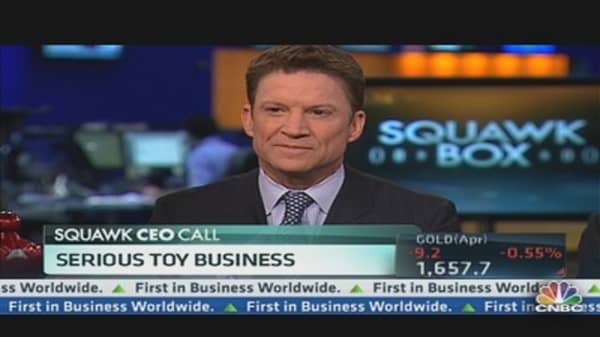To be fair, the industry can boast plenty of successes. Many children have access to tablets and green toys with a retro feel and sometimes made in the U.S., not in China, have gained traction.
Activision Blizzard's Skylanders has topped $1 billion in global retail sales in just 15 months. That franchise artfully combines video games with action figures. And you can't ignore perennial hits from Mattel Barbies toHasbro action figures tied to blockbuster franchises such as Angry Birds and Star Wars.
(Read more: How Mobile Technology Is Revolutionizing In-Store Shopping)
Flat Toy Sales
But these hits haven't been enough to reverse an overall decline in toy sales. Annual U.S. toy sales were $20.47 billion for 2012, down 3.5 percent from $21.21 billion from a year earlier, according to research compiled by the NPD Group, a consumer market research firm.
Drilling down further, toy building sets such as building blocks posted a year-over-year sales gain of 15.7 percent in 2012. But plush toys and outdoor and sports related toys dropped 20.4 percent and 10.2 percent, respectively, year over year. Sales of games and puzzles fell 8.4 percent, according to NPD.
During the 2012 holiday season, U.S. shoppers spent only 3 percent more than they did in 2011 because of concerns about the economy, the National Retail Federation said.
"You're probably going to have another down year in 2013," said Sean McGowan, a senior analyst with Needham & Company. (Read more: Dour December May Not Spell Retail Disaster This Year)






